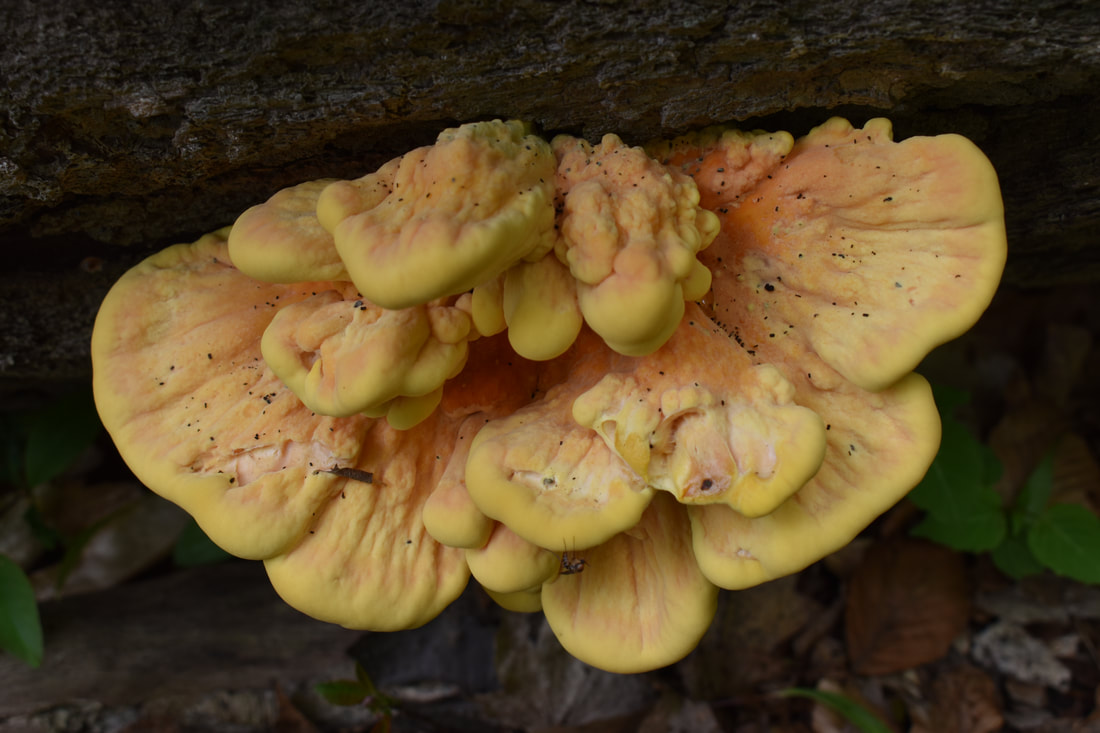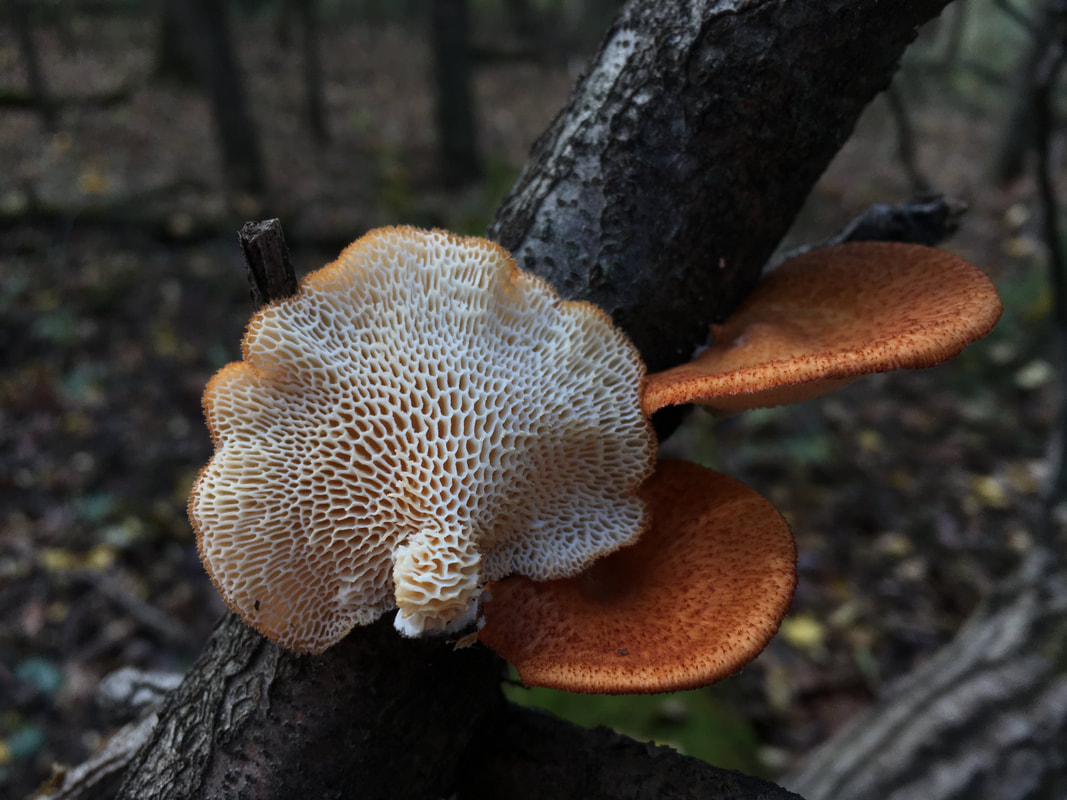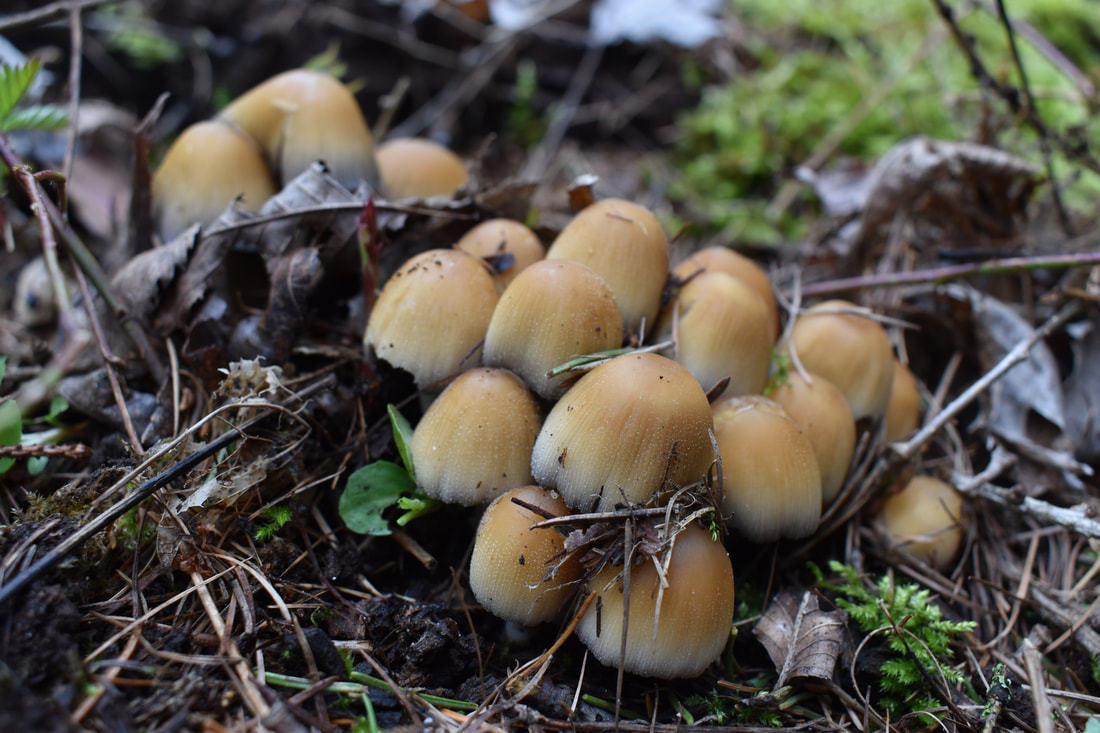|
MycoBank Taxonomy: Fungi, Dikarya, Basidiomycota, Agaricomycotina, Agaricomycetes, Polyporales, Fomitopsidaceae, Laetiporus Laetiporus sulphureus is a magnificent mushroom, easily identifiable by its bright yellow pore surface and overlapping, shelf-like growth on the standing or fallen trunks of hardwoods. It might just be my all-time favorite mushroom. The young mushrooms check all the boxes of a great wild edible:
That's right, if you find a mega flush, there will likely be more chicken than you can eat yourself and others will be eager to buy it from you. In Ann Arbor, chicken of the woods fetches about $16 a pound. The flush documented here, which I found when the mushrooms were just starting to bubble out of a large downed trunk, yielded about 50 pounds of tender chicken over the span of a week.
2 Comments
MycoBank Taxonomy: Fungi, Dikarya, Basidiomycota, Agaricomycotina, Agaricomycetes, Polyporales, Polyporaceae, Noefavolus Mushrooms referred to as the hexagonal-pored polypore, or Neofavolus alveolaris, are common and widespread across eastern North America in the spring. They can persist through the summer, fall, and even into the winter, becoming hardened and bleached over time. Despite the common name, the pores are rarely perfectly hexagonal, instead usually vaguely and irregularly polygonal. Regardless, the hairy/scaly orange cap and large, elongated pores make this mushroom easily recognizable – that is, if we actually knew what we were identifying. Neofavolus alveolaris represents a number of cryptic species, which may not be all that suprising given that name has been applied to similar mushrooms occurring in temperate and boreal areas across the entire Northern Hemisphere (Sotome et al. 2013).
Mycobank Taxonomy: Fungi, Dikarya, Basidiomycota, Agaricomycotina, Agaricomycetes, Agaricomycetidae, Agaricales, Psathyrellaceae, Coprinellus Coprinellus truncorum (or more commonly referred to as C. micaceus - more about that later) is an inky cap, which means before you know it, the mushroom will enzymatically digest itself in a soppy process called deliquescence. Inky caps are really the milquetoasts of the mushroom world, turning into complete mush soon after fruiting. Deliquescence is much more than feebleness, though. It is a process of spore dispersal that has evolved independently in multiple lineages of mushrooms. Deliquescence starts at the edge of the cap and moves towards the stem. Meanwhile, the spores mature in the same pattern, but one step ahead of the destructive enzymes. As a result, mature spores are always at the edge of the dissolving cap - a perfect position to catch air currents for dispersal. If you are interested in learning more about inky caps and their taxonomy, check out Michael Kuo's page on the topic.
For Michigan and much of the upper Midwest and Northeast, May marks the beginning of the six-month mushroom-hunting season and is heralded by a unique cast of tasty fungi. I recently received an email from the Michigan Mushroom Hunter's Club that listed the 26 species of common macrofungi that can be found in May. This list comes from a 1986 article by Walt Sturgeon entitled "May in Michigan Means Morels and More", which is what my alliterative header pays homage to. I wanted to share the list here, both as a phenological resource as well as a reference of edibility. The names are updated to reflect current taxonomy:
|
PermalinksProject Introduction Top EdiblesHericium coralloides
Laetiporus sulphureus Morchella americana Polyporus umbellatus Suillus ampliporus Archives
April 2023
Categories |
|
|
Terms of Use, Liability Waiver, and Licensing
The material on aldendirks.com is presented for general informational and educational purposes only, and under no circumstances is to be considered a substitute for identification of an actual biological specimen by a person qualified to make that judgment. Some fungi are poisonous; please be cautious. All images on this website are licensed under Attribution-NonCommercial-NoDerivatives 4.0 International (CC BY-NC-ND 4.0). |



 RSS Feed
RSS Feed




